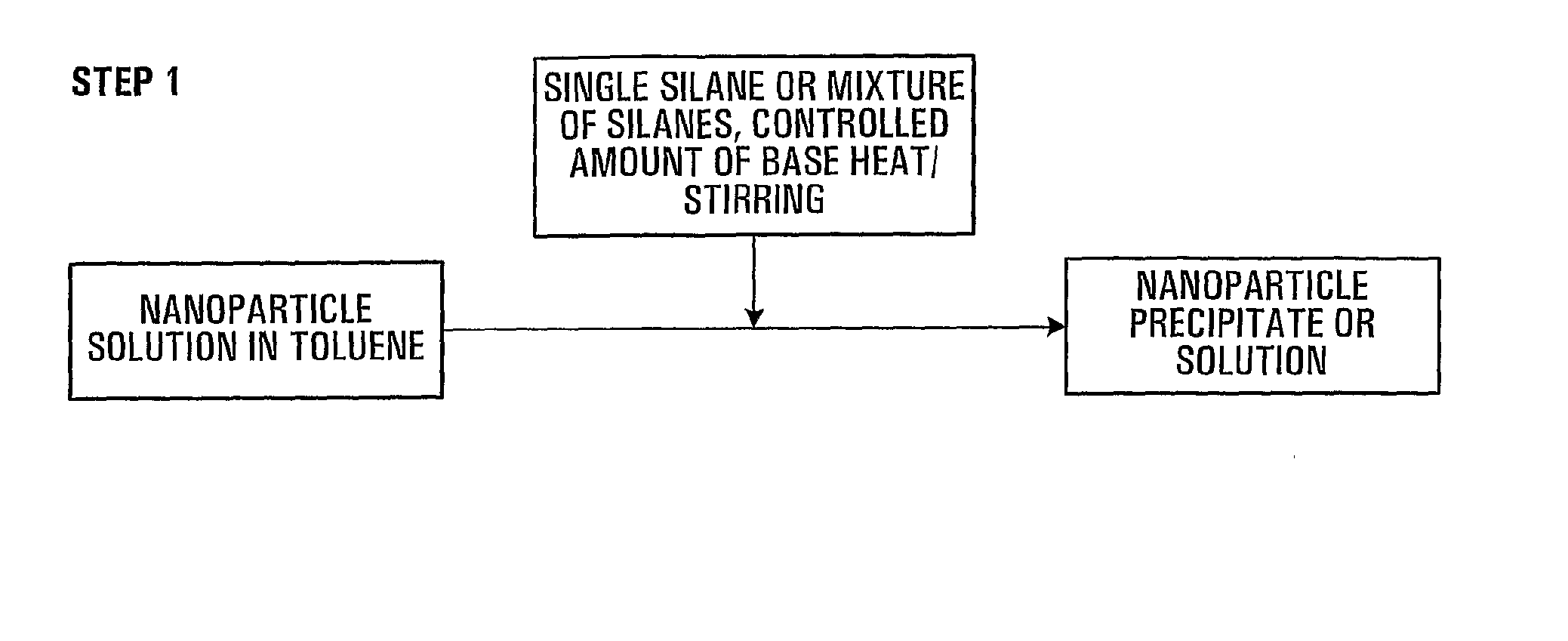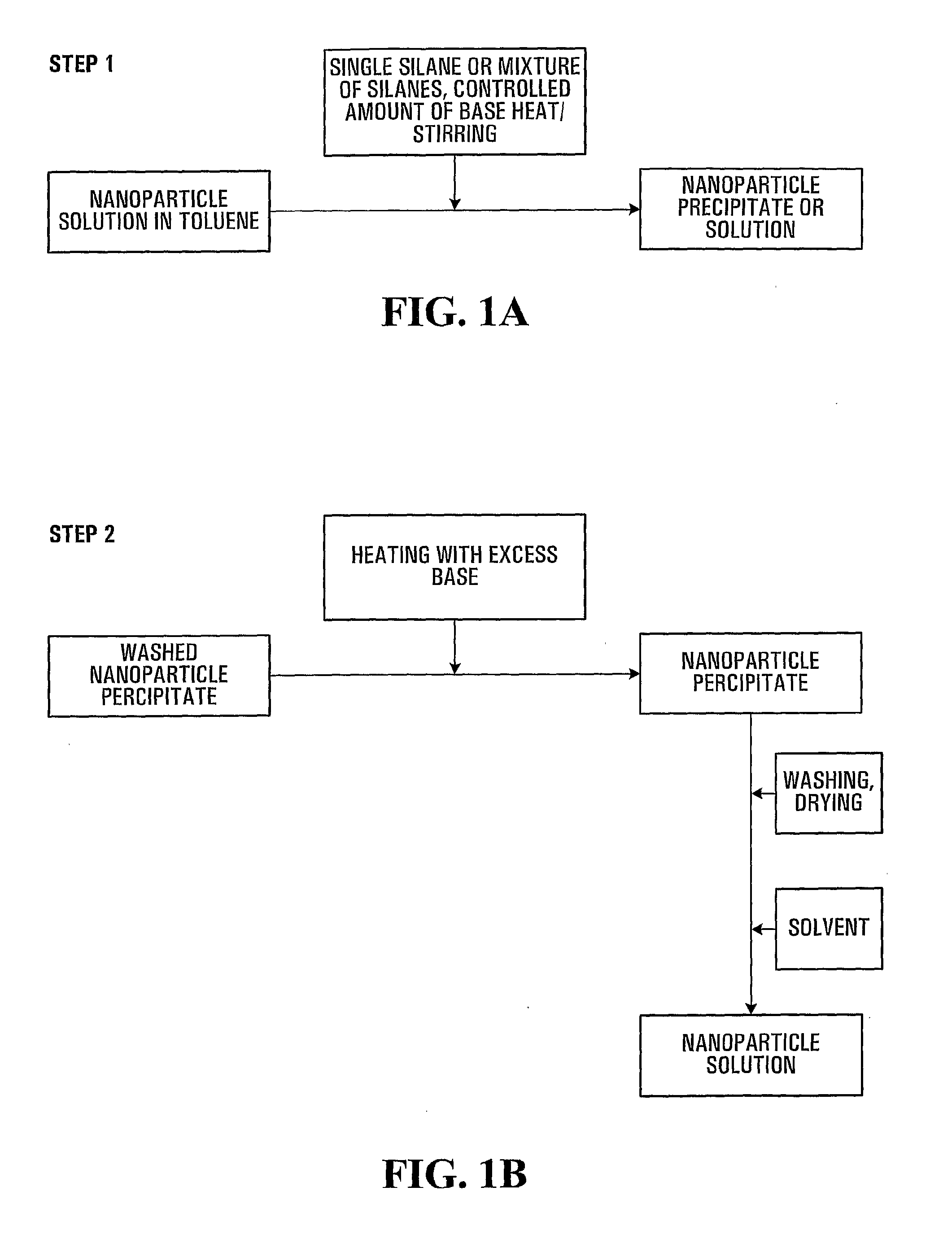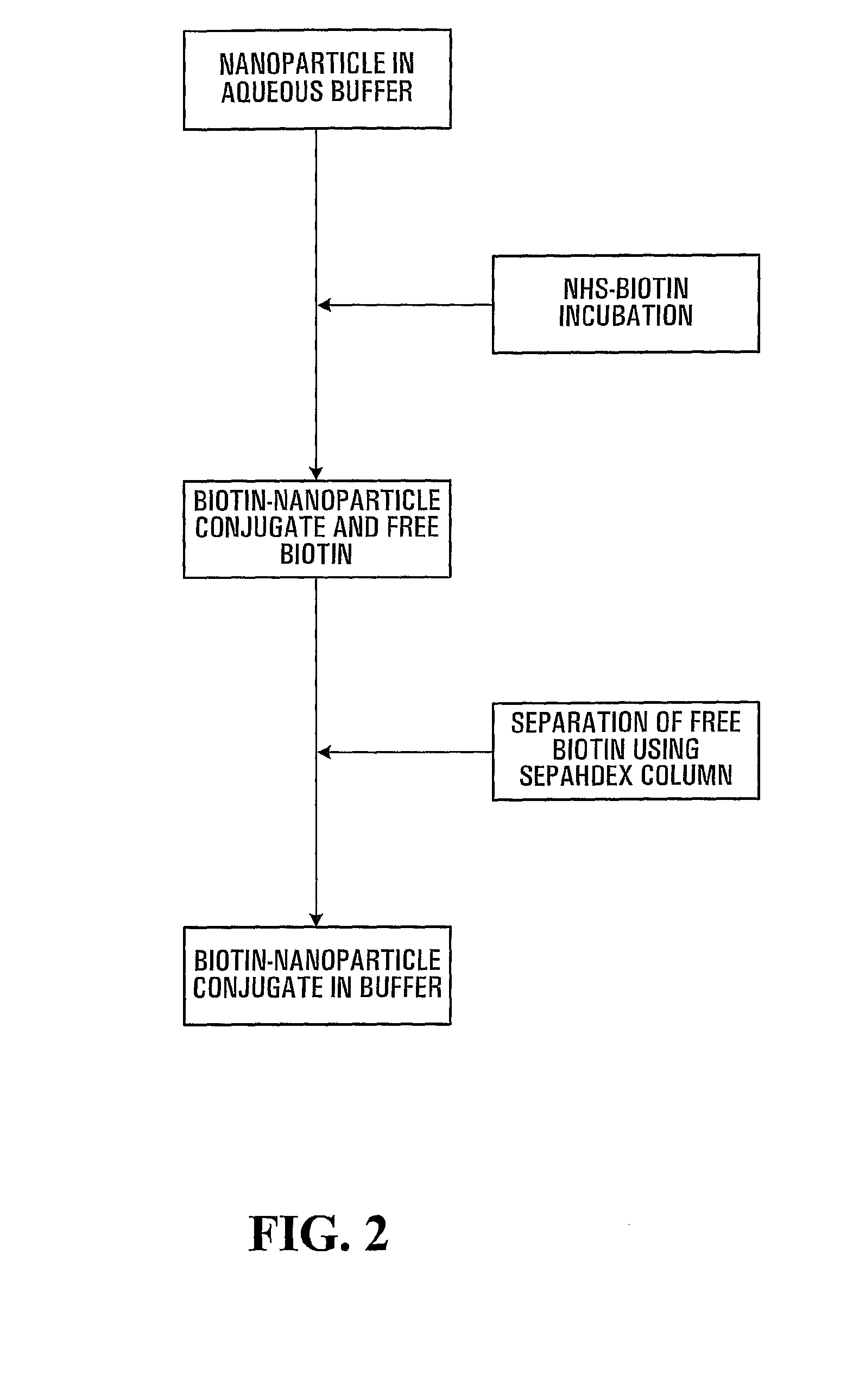Water-Soluble, Surface-Functionalized Nanoparticle for Bioconjugation Via Universal Silane Coupling
a surface-functionalized, nanoparticle technology, applied in the direction of silicon compounds, peptides, iron organic compounds, etc., can solve the problems of irreversible aggregates, less stable ligand-exchanged nanoparticles, and the formation of water-insoluble nanoparticles
- Summary
- Abstract
- Description
- Claims
- Application Information
AI Technical Summary
Problems solved by technology
Method used
Image
Examples
example 1
Preparation of Amine-Functionalized 5-nm Fe3O4 Nanoparticles Using Aminosilane
[0046] Iron oxide nanoparticles of 5 nm were prepared in octadecene using a mixture of octadecylamine and iron(II) stearate. After preparation, the nanoparticles were purified via methanol precipitation and toluene redispersion. The toluene dispersion was then used in two-step silanization with aminopropyl trimethoxysilane at 60° C. Final solid nanoparticles were dispersed in water using dilute formic / acetic acid. The nanoparticles were partially soluble in water without acid.
[0047] TEM images of 5-nm oxide nanoparticles, before and after silanization, are shown in FIG. 6. From the TEM images, it can be seen that particle size does not change substantially during silanization, that the silane coating is too thin to be seen, and that the particles are isolated after being coated.
example 2
Preparation of Amine- and Phosphonate-Bifunctionalized 15-nm Fe3O4 Nanoparticles Using Mixed Silanes
[0048] Iron oxide nanoparticles of 15 nm were prepared in octadecene using a mixture of iron(II) oleate and oleic acid. After preparation, the nanoparticles were purified via methanol precipitation and toluene redispersion. The toluene dispersion was then used in two-step silanization with a mixture of phosphonate silane and bis(aminoethyl)aminopropyl trimethoxysilane at 60° C. Final solid nanoparticles were dispersed in water using dilute formic / acetic acid.
[0049] TEM images of 15-nm oxide nanoparticles, before and after silanization, are shown in FIG. 6. Again, the TEM images support the earlier observations that particle size does not change substantially during silanization, that the silane coating is too thin to be seen, and that the particles are isolated after being coated.
example 3
Preparation of Hydrophobic 5-nm Fe3O4 Nanoparticles Using Octadecylsilane
[0050] Iron oxide nanoparticles of 5 nm were prepared as described in Example 1. The purified nanoparticles were dispersed in toluene and used in two-step silanization with hexadecyl trimethoxysilane at 60° C. The silanized nanoparticles were dispersed in toluene / hexane.
PUM
| Property | Measurement | Unit |
|---|---|---|
| diameter | aaaaa | aaaaa |
| molar ratio | aaaaa | aaaaa |
| diameter | aaaaa | aaaaa |
Abstract
Description
Claims
Application Information
 Login to View More
Login to View More - R&D
- Intellectual Property
- Life Sciences
- Materials
- Tech Scout
- Unparalleled Data Quality
- Higher Quality Content
- 60% Fewer Hallucinations
Browse by: Latest US Patents, China's latest patents, Technical Efficacy Thesaurus, Application Domain, Technology Topic, Popular Technical Reports.
© 2025 PatSnap. All rights reserved.Legal|Privacy policy|Modern Slavery Act Transparency Statement|Sitemap|About US| Contact US: help@patsnap.com



